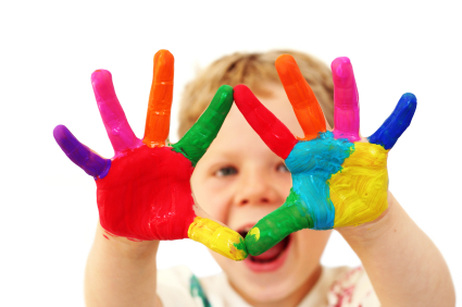Teaching kinesthetic learners; characteristics ideas and strategies
Kinesthetic learners are often misunderstood and told that
they need to “sit still” in class. Their
inability to do so may appear to be a behavioral problem, but that’s just exaggeration.
Simply put, kinesthetic learners need to move to be able to learn!
In the best UAE schools, it’s a common sight to see
auditory, visual and kinesthetic learners within the same classroom. Teachers
recognize the different strengths and weaknesses of students and work around
them to help students learn. Once teachers recognize characteristics of kinesthetic
learners in primary school, it’s up to the best schools and the most
competent teachers to help them out!
If you’re looking for
ways to enhance the learning of your kinesthetic learner, American primary schools in Dubai should be your first choice! The best
schools know how to handle different learning styles! The article below explains some tips, ideas,
and strategies to help your early age learner get through with kinesthetic
learning!

Eight characteristics of kinesthetic learners:
It’s important to identify kinesthetic learners in their
early years in order to workaround teaching methodologies and to allow them an
equal learning opportunity. Look for the following kinesthetic learner’s characteristics
if you’re unsure about your child’s way of learning:
- Tend to learn faster through touching, tasting, and spelling
- They daydream
- Express thoughts with their hands and body
- Are overwhelmed by wordiness
- Work or play alone or with a specific friend
- Can integrate parts
- They possess the ability to construct 3D images( from different perspectives)
- They have the control needed for athletics, building things, etc.
- They need to make physical contact
Teaching strategies and ideas:
Focus on the “how” of the concept. How it feels, works,
functions, might help the child learn. Use concrete activities or visual
information to help them learn. Maintain physical proximity as they tend to
need physical proximity.
When you’re reading out stories, ask students to draw out
the scenes. Once the reading session is over, ask the children to explain what
they’ve drawn, write summaries or create a comic out of it. You can also ask children to recall a recent
story they read or heard and create pictures out of it. Creating a picture book
out of it and acting it out can pique their interest too!
Create an interesting presentation for children. Early
primary students can be taught using cartoons, animations, and puppet shows.
For science subjects, 3D models are excellent ways to help children learn.
There is no other way they can envision all the different bones in the body!
To help sentence formation in primary level students,
provide them pictures. Hand them strips of paper with sentences written on
them, describing the pictures. Get the children to work in pairs to complete
tasks.
Language skills
For vocabulary and spelling let the children create
alphabets with their limbs and their bodies. Get children to spell our words
using their bodies and use board games such as scrabble to learn words being
studied in class.
Mathematics skills
Use food, to teach them basic yet critical concepts such as
addition, multiplication, etc. Use different material to help them learn about
measurements. Use dice as class props for concepts of probability
Take away!
Kinesthetic learns maybe thought of as having learning
difficulties so firstly it’s important to identify their learning needs and
work around them to help children learn. If you’re looking for tips to help out
your kinesthetic learner, read the tips above. If you’re looking for a more
permanent learning solution, opt for the best American primary school in Dubai that works with your early age
learner and helps them out based on their specific needs!



This comment has been removed by the author.
ReplyDelete